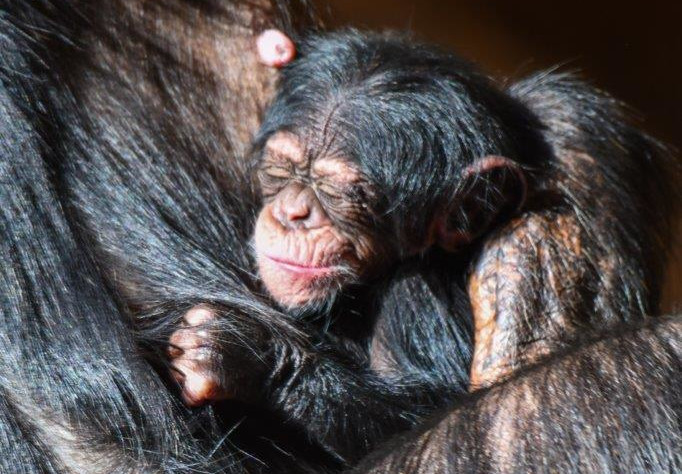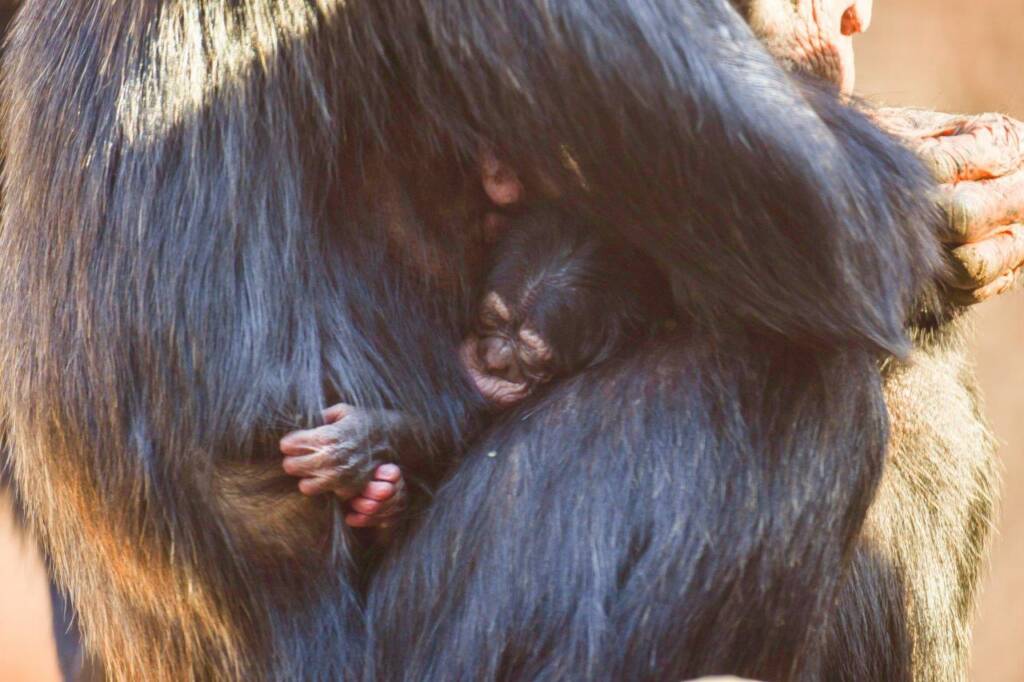
Loro Parque has recently welcomed a baby chimpanzee (Pan troglodytes) in its facilities, which is in perfect condition and already shares the space in harmony with the rest of the family. For the moment, as it spends its days clinging to its mother’s fur, its sex is unknown. The last ones to join the group were Happy, in 2017, and Garoé, in 2018.
Its birth shows that the animals at Loro Parque are in a good state of wellbeing and that life goes on despite having been closed for almost a year due to the COVID-19 crisis. All the animals living in the zoo’s facilities have continued to receive all their care, and furthermore, all necessary biosecurity measures have been reinforced to protect them from the coronavirus.

This species arrived at the Park in 1978, when the mayor of Puerto de la Cruz asked Wolfgang Kiessling for help to house five specimens that had been seized from street photographers who had used them to take photos with tourists. Now, they enjoy an extraordinary facility created in 1998, with a large outdoor enclosure set with rocks, lush vegetation and soothing cascading waterfalls. Today, they form one of the most successful breeding groups of this subspecies in Europe.
The International Union for Conservation of Nature (IUCN) has included the chimpanzee on its red list with the status critically endangered. Although it is the most widespread and numerous primate species, in recent decades it has suffered a sharp decline due to the loss and alteration of its habitat as a result of the expansion of human activities. It is estimated that, at this rate of degradation, the global chimpanzee population in 2030 will be reduced by half.













